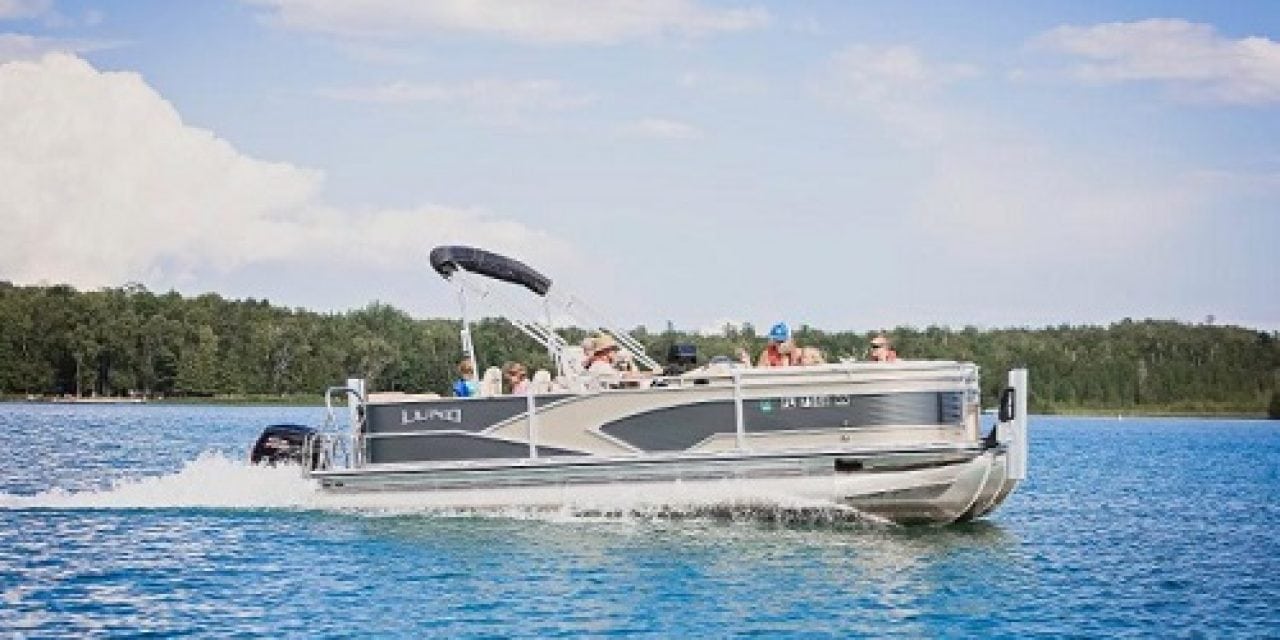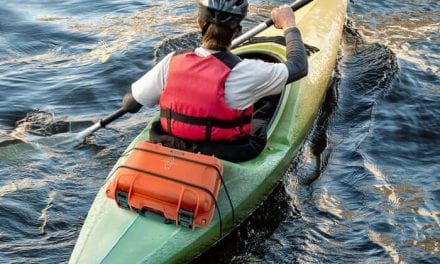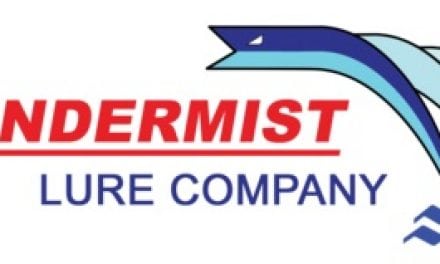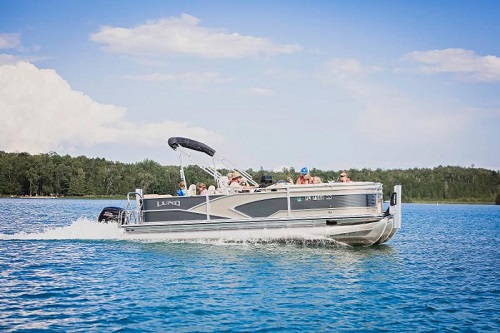 If you’ve attended a boat show in the last few years, you know luxurious pontoon boats are enjoying a surge in popularity among recreational boaters. Many of these next-generation pontoons are aimed at consumers who enjoy a wide variety of leisure activities from full-comfort cruising to high-powered watersports adventures.
If you’ve attended a boat show in the last few years, you know luxurious pontoon boats are enjoying a surge in popularity among recreational boaters. Many of these next-generation pontoons are aimed at consumers who enjoy a wide variety of leisure activities from full-comfort cruising to high-powered watersports adventures.Thanks to fishing-friendly boat-builders like Lund Boats, however, pontoons are also coming of age as full-featured, hard-core fishing machines.
“Pontoons have long been a great way for family and friends to get together on the water,” says veteran guide and decorated tournament competitor Scott Glorvigen. “They’ve traditionally been considered better suited to laid-back boat rides than serious fishing, but pontoons like Lund’s new Fish & Cruise and Lund Fish 200, 220 and 240 models in the LX Series are truly high-performance fishing platforms.”
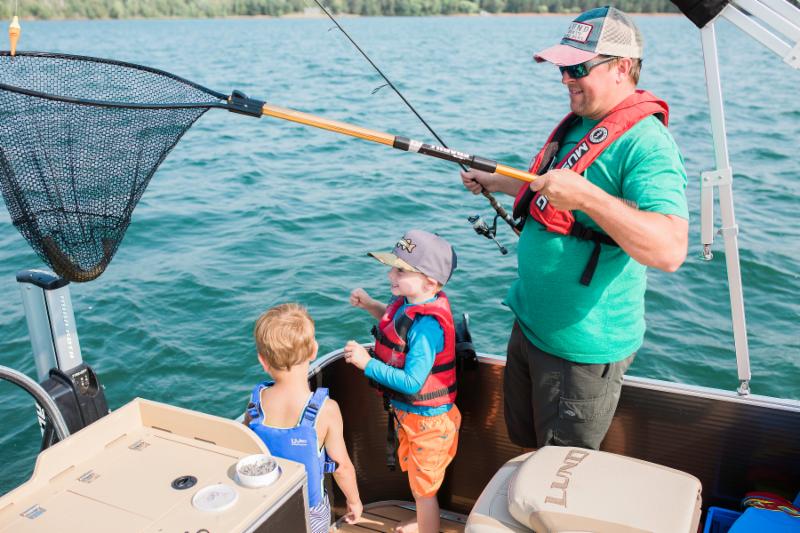 |
As Glorvigen explains, Lund combined the smooth-riding, easy-handling characteristics of its other pontoons with serious fishing features designed to help avid anglers get the most from their time on the water. “Lund built its fishing DNA into these new pontoons,” he says. “I put one of them to the test in a variety of conditions and was extremely impressed.”
Available in 20-, 22- and 24-foot pontoon length options, Lund’s new LX Series models are built with the same stringent construction standards as the company’s iconic fishing boats.
“Starting at the base, 25-inch diameter tubes add strength, buoyancy and stability,” Glorvigen begins, noting that baffled, airtight sections limit water intrusion in the unlikely event a tube is damaged.
“Full-width crossmembers support the decking from port to starboard, increasing strength without adding weight,” he continues. “The rails are also spaced closer together in key areas for extra support, such as around the motor.”
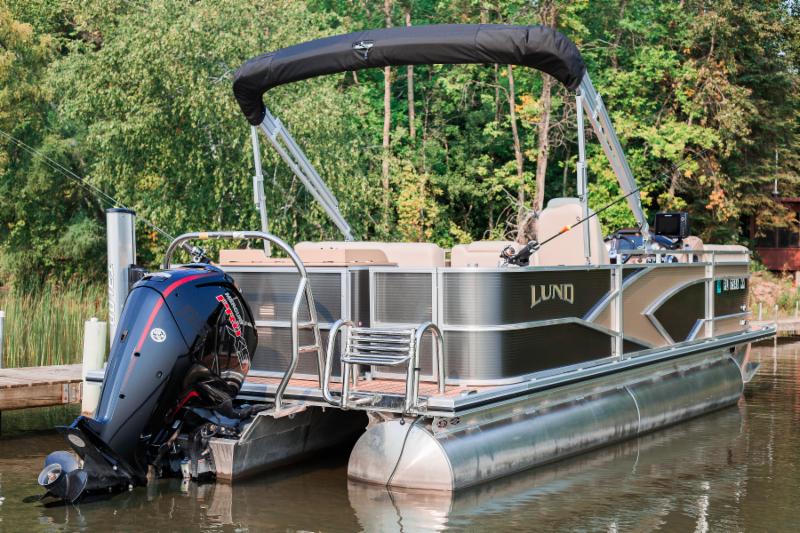 |
To ensure rigidity and eliminate flex, more than 100 custom tek-screws are set on both sides of every deck seam. Plus, a two-step, under-deck water prevention system utilizing butyl rubber tape and a urethane sealant keeps moisture at bay. Further fighting unwanted H20, rotocast seat bases feature built-in drainage to keep the interior dry.
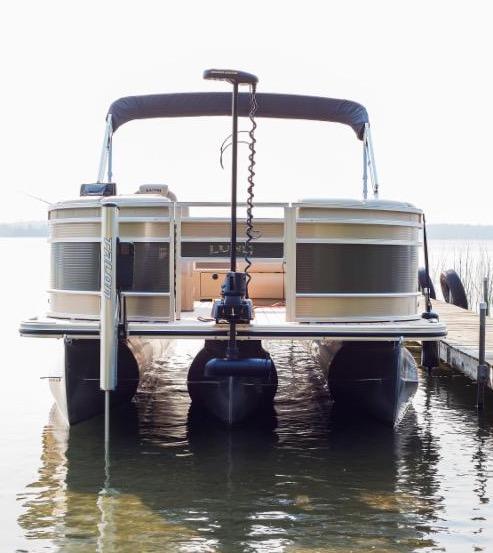 |
As a bonus, sound-dampening fence construction sandwiches foam tape between the fence frame and panel to eliminate fish-spooking rattles for a silent ride. Fence panels are full height, too, for increased safety and the protection of interior furniture.
Sport and Performance Plus package options add a third, center-mounted tube for extra speed, buoyancy, fuel capacity and maneuverability. Tube count also affects maximum horsepower rating. For example, the twin-tube 200, 220 ad 240 Lund Fish models are rated for 115-, 150- and 175-horsepower motors, respectively, while the three-tube versions accommodate 150, 200 L-4 and 200 L-6 engines.
“Each of the 200, 220 and 240 models are available in five different layouts, to satisfy the needs of any angler or boater,” Glorvigen adds. “Standard features include a well-appointed helm with full instrumentation and stereo. The dash also accommodates flush-mount electronics up to 7 inches in size, or you can easily mount big-screen electronics above it for extra detail.”
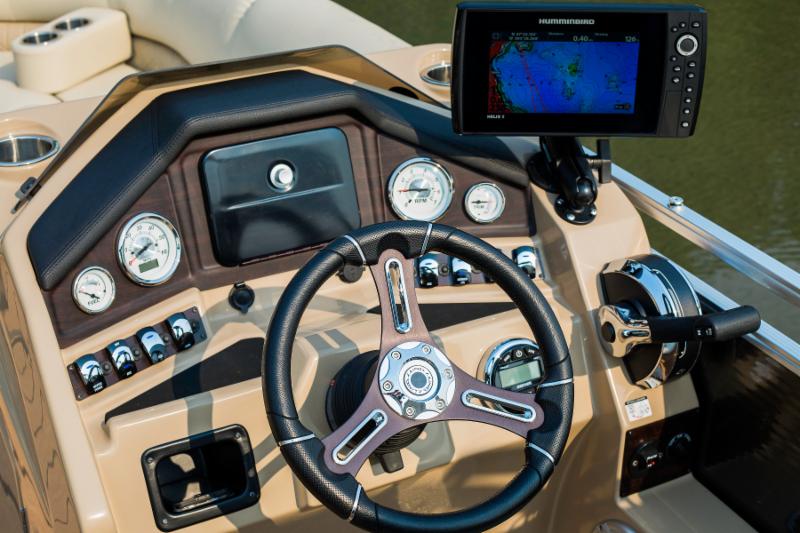 |
Fish & Cruise models blend family-friendly amenities with serious fishing features, while Glorvigen calls the hard-fishing features of the Lund Fish boats some of the best you’ll find in any four-point fishing pontoon.
“The aft tackle station has a split-door livewell and baitwell, tackle drawers that hold eight 3600 Plano tackle trays, plus a wash station. There’s also an additional bow livewell and tackle storage, so anglers up front aren’t running from one end of the boat to the other,” he says. “Plus, you have an 8-foot horizontal rod locker that keeps rods safe, secure and out of the way.”
 |
Of course, enterprising anglers can add a variety of accessories to further customize their pontoon. “For example, I mounted a pair of Minn Kota Talon shallow-water anchors on the pontoon I tested,” he reports. “Placing them in opposite corners fore and aft pinned the boat in place better than conventional anchors, and prevented it from swinging in the wind.”
To further engender seamless boat positioning, Glorvigen hung a Minn Kota Ulterra trolling motor on the bow.
“A trolling motor raises the bar in boat control,” he says. “The Ulterra is a great choice when outfitting a pontoon or other fishing boat. The fast-response, electric steer motor offers a full suite of high-performance such as Spot-Lock, which holds the boat in position regardless of wind, waves or current. Plus, Ulterra adds the convenience of effortless auto deploy, stow and power trim features. You can operate it from anywhere in the boat via handheld remote, and a quick-release bracket makes it easy to remove the trolling motor for cruising or trailering.”
 |
Rigged and ready for action, the Fish & Cruise and Lund Fish pontoons are redefining how anglers use and perceive these types of boats.
“Some people may be skeptical at first, but pontoons have come a long way from the Dark Ages of slow-moving, hard-to control party barges,” says Glorvigen. “These aren’t your grandpa’s pontoons. They’re hard-fishing boats that offer plenty of elbow room for multiple anglers. As a bonus, they can also do double-duty when it’s time to load the boat with family or friends and take a relaxing spin around the lake.”
The post Pontoons come of age as fishing machines appeared first on ODU Magazine-North America’s #1 Digital Fishing Magazine.

